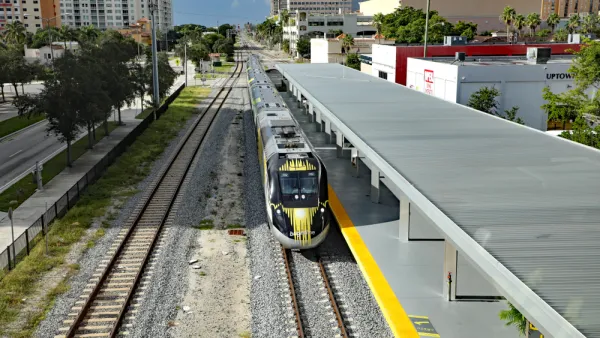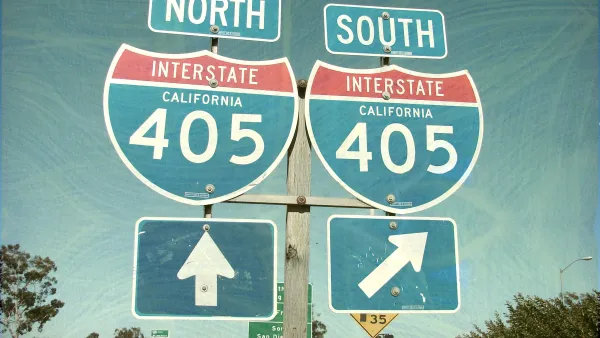A new academic study has determined that California's beleaguered high speed rail project may meet at least one promise if fully built - it can bring the environmental improvements that supporters boasted when travelers ditch planes and cars for HSR.
Meg McCabe reports on the new UC Berkeley/Arizona State University analysis of the environmental benefits that the public can expect if the now-initially funded high speed rail project is built and begins operation - which could be 20-30 years after next year's expected groundbreaking.
"UC Berkeley Professor Arpad Horvath and Arizona State University assistant professor Mikhail Chester authored the study, published (July 26) in the journal Environmental Research Letters, which evaluates the environmental and human-health impacts for the future of long-distance transportation."
"Even when you account for the life cycle effects, it's very likely that the development of the rail will help reduce greenhouse gas emissions," Chester said.
Sarah Yang, UC Media Relations, also reported on the just-released study.
"We're showing that if this high-speed rail system is deployed, it is likely that California will reduce its transportation environmental footprint," said Chester, who began this work as a UC Berkeley post-doctoral researcher. But to reap those environmental benefits, the state will have to wait until the system becomes fully operational, which could take an estimated 20-30 years after groundbreaking."
The authors write in the report's abstract:
"The environmental payback is most sensitive to the number of automobile trips shifted to high-speed rail, and for greenhouse gases is likely to occur in 20–30 years. A high-speed rail system that is deployed with state-of-the-art trains, electricity that has met renewable goals, and in a configuration that endorses high ridership will provide significant environmental benefits over existing modes."
Thanks to Reconnecting America
FULL STORY: California high-speed rail project will benefit state, study shows

Analysis: Cybertruck Fatality Rate Far Exceeds That of Ford Pinto
The Tesla Cybertruck was recalled seven times last year.

National Parks Layoffs Will Cause Communities to Lose Billions
Thousands of essential park workers were laid off this week, just before the busy spring break season.

Retro-silient?: America’s First “Eco-burb,” The Woodlands Turns 50
A master-planned community north of Houston offers lessons on green infrastructure and resilient design, but falls short of its founder’s lofty affordability and walkability goals.

Test News Post 1
This is a summary

Analysis: Cybertruck Fatality Rate Far Exceeds That of Ford Pinto
The Tesla Cybertruck was recalled seven times last year.

Test News Headline 46
Test for the image on the front page.
Urban Design for Planners 1: Software Tools
This six-course series explores essential urban design concepts using open source software and equips planners with the tools they need to participate fully in the urban design process.
Planning for Universal Design
Learn the tools for implementing Universal Design in planning regulations.
EMC Planning Group, Inc.
Planetizen
Planetizen
Mpact (formerly Rail~Volution)
Great Falls Development Authority, Inc.
HUDs Office of Policy Development and Research
NYU Wagner Graduate School of Public Service



























